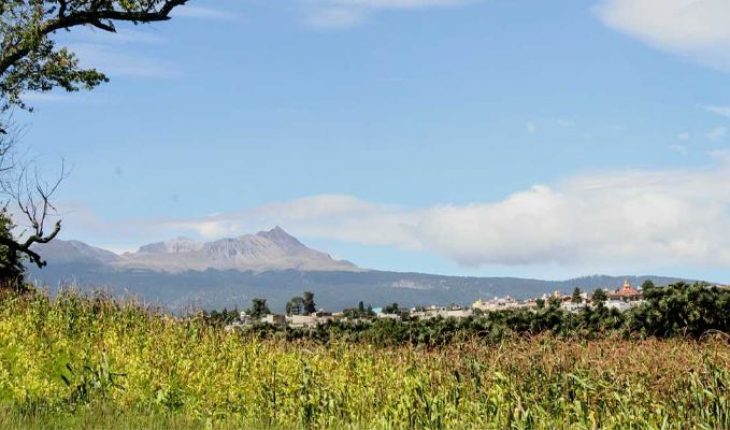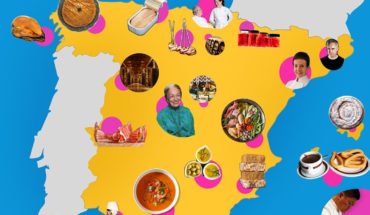In 1824 the State of Mexico was five times larger than the present, with 120 thousand km2 divided into districts ranging from the coasts of Guerrero to the limits of Veracruz; today it has 22 thousand 500 km2 centered on the map of the Republic, said Gerardo Novo, chronicler of Toluca.
“The antecedent is that a little before the Independence of Mexico was divided into twelve quarters, then ceases to be quartermaster and becomes a state of the federation, it was a truly large territory.”
With this, he said, the entity crossed from east to west, from the Pacific to about 80 kilometers before the Gulf coast, at the time its capital was what is now known as Mexico City, but for political reasons its dimensions diminished throughout history.
“It was a really great state, then from the nineteenth century they began to undergo mutilations, it was losing several territorial spaces and of that enormous extent until we see in what it is now.”
The expert detailed that before the Independence of Mexico the Mexican territory had 12 quarters, but after the Constitution of 1824 was formed it officially becomes a state, divided at some point in the districts of Acapulco, Cuernavaca, Huejutla, Mexico, Tasco, Toluca, Tula and Tulancingo.
During the nineteenth century, he said, the entity had multiple changes that made it what it is today, Was lost Querétaro and Mexico City, since on April 16, 1826 the populations whose territory was mostly within the federal territory, would become administratively part of the then Federal District.
It is also followed by Tlalpan, which was formerly the capital of the State of Mexico, but became part of CdMx, the position was also occupied by Texcoco, but finally in 1830 it was left with the name Toluca. Also, Guerrero is separated where important tourist sites such as Taxco and Acapulco are located.
“Calpulalpan was added to Tlaxcala and, in 1869, the state of Hidalgo was created and finally the state of Morelos was formed, with which districts such as Cuernavaca were lost, in conclusion, the three states named after insurgent heroes are separated.”
After this division, Hidalgo was left with an extension of 20 thousand 813 km2, Morelos with 4 thousand 950 km2 and Guerrero with 64 thousand 281 km2 where there are several kilometers of beaches, which left the Mexiquens without coast and with less than half of its demarcation. In this regard, Novo acknowledged that these were modifications that responded to the turbulent 19th century, “there were many factors mainly for political control purposes, which dwarfed the entity into a kind of horseshoe.”
By 1917 Edomex already had the current territorial structure, but with fewer municipalities, which at that time amounted to around 95; today it borders Mexico City, Hidalgo, Querétaro, Michoacán, Guerrero, Morelos, Puebla, Tlaxcala and Puebla.
Although the entity has a great cultural diversity full of traditions and gastronomy, the range was much greater by bringing together in a single state a wide range of climates, flora and fauna that offered the Mexiquens from beaches to wooded areas and volcanoes, or even historic centers and buildings with a characteristic architecture of the time of the Colony.
However, over the years the geopolitical reality changed its territorial structure and considerably diminished its extent and the supply of each community, including its population plurality that today is still diverse thanks to the presence of peoples prevailing in the region, mainly five: mazahua, ottoman, nahua, matlatzinca, tlahuica, in addition to the migrants of other federal entities of the country that have settled in some communities.
Although it is no longer this great demarcation that exceeded 100 thousand kilometers from east to west, the State of Mexico is a national benchmark by heading the statistics in many positive and negative items, such as being one of the most populated along with Mexico City, Veracruz and Jalisco, although by extension it occupies the 25th place with 22 thousand 500 km2 in which 125 municipalities are located , according to Inegi data.
It should be noted that the maximum extent was considered to be with the Mexican Empire that reached the coasts of the Pacific Ocean and the Gulf of Mexico, which involved the existence of a wide variety of political, social and administrative systems, a geographical structure considered as a starting point for the first territory of the state.
The changes that have since been made could continue, a possibility that is seen with the newly announced proposal to divide Ecatepec to create the Aztec City, officially presented to the Provincial Counciln Permanent Of the Mexican Congress to strengthen the municipality, which has 186.9 km2 where more than 1.6 million people live, making it the second most populous in the whole country, only after Iztapalapa.
Although it is not yet a reality, the Toluca specialist stated that it is not a new issue in the entity and, in this sense, shared that the transition from the whole of the Valley from Mexico to the state is already considered in the Constitution of 1857, but, although there is a legal avenue that would allow this to happen, it does not yet happen since the necessary conditions are not met.
“The State of the Valley of Mexico has been planned since 1857, but it was conditioned that at one point the capital of the Republic will cease to be in what is now Mexico City, then the possibility exists, but the right conditions have not been given.”
translated from Spanish: In 195 years Edomex lost 195 thousand km2, to beaches
August 22, 2020 |





